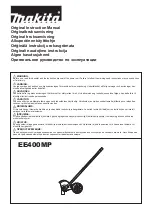
1 – 4
Getting Started
state causes the output voltage to change in real time.
When the programmed voltage
|
V
|
<
1
.
999 V, the display shows the
full settable resolution of the SIM928. At greater voltages (
|
V
|
>
1
.
999 V) the least significant digit shown corresponds to 10 mV. It is
still possible to make discrete 1 mV steps using [1 mV ]; by counting
key taps, the user can determine the sub-display voltage setting.
When
|
V
| ≥
2
.
00 V, the display always corresponds to the
truncated
value of the programmed voltage. For instance, if
V
= +
2
.
120 V
through
+
2
.
129 V, the display will show
; similarly, if
V
=
−
12
.
730 V through
−
12
.
739 V, the display will show
.
1.2.2
Battery
The “BATTERY” block of the front panel shows the present state of
the SIM928’s internal battery system. The two batteries, labeled “A”
and “B”, correspond to the two shaded rows, while the available bat-
tery states
On
,
Charge
, and
Ready
correspond to the three columns.
A battery is
On
when it is switched to power the output stage;
Ready
corresponds to a battery in the (nominally) fully-charged state that
is ready for operation when the
On
battery is depleted. The
Charge
state indicates that the battery is connected to the charger circuit.
1.2.2.1
Battery cycle
Under typical operation, a fully charged battery should run for 12–
18 hours before being depleted. When the
On
battery is nearly dis-
charged, an internal threshold circuit signals the SIM928 controller to
begin a battery switch-over. The stand-by battery (which at this point
is typically in the
Ready
state) is switched onto the output circuit,
after which the discharged battery is switched to the charger cir-
cuit. A “diode-or” circuit e
ff
ectively prevents the discharged battery
from loading down the fresh battery, and the output driver operates
without interuption.
1
.
When the discharged battery is first connected to the charger circuit,
a resistive load is briefly applied to complete the discharge of the cell
to a known starting voltage. From that point, the charger applies a
fixed charging current for
∼
5 hours to completely charge the battery.
If power is interrupted while the battery is charging, the charge cy-
cle will
not
resume; rather, the power-on system check will select
the most depleted battery for initial operation and place the other
battery in the
Ready
state (assuming neither battery appears fully
discharged). This algorithm ensures that a battery cannot be over-
charged by an unfortunate series of power-cycles.
1
A small glitch may appear at the output when the fresh battery switches in
SIM928
Isolated Voltage Source













































